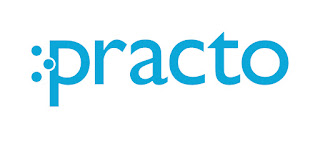From Practo, Asia’s No. 1 healthcare search engine and doctor-booking platform.
Four Trends Taking Shape in the Healthcare Sector in Southeast Asia in 2016
Preamble:
Tempus fugit; in a trance, we have been transported to 2016. Looking back, 2015 has been a good year for healthcare. We at Practo are observing several trends that have been building up momentum for this year.
In this report of predictions, we hope to provide inspiration for rich and deep conversations about healthcare, and prompt creation of new ideas amongst our peers. The healthcare landscape in 2016 will be both challenging and exciting; companies will take small and steady steps to continue innovating the industry and meeting demands from everyone involved in this process.
At the cusp of a new year, let us review the achievements in 2015, and reflect on what we could do for 2016.
1. Smart Health – a big contributor to Smart Nation
Smart Health is an important component of building a Smart Nation for Singapore, corroborated by rapid digitization of healthcare processes and exploding amount of digital data generated from doctors and patients. In Singapore, the government has projected healthcare spending to triple to S$12 billion by 2020, and said that the challenge continues to be providing high-quality healthcare in an affordable way. To do so, smart healthcare is the solution to turn to.
In 2016, consumers will become a more active initiator of healthcare-related queries, with the help of smart devices, mobile apps, and e-healthcare service portals. Such technologies will inevitably close the gap between care-givers/doctors and patients, making their communication and interactions seamless and more frequent.
Smart data will be another growing trend for the healthcare sector in 2016, with a focus on data collection and data analytics, to enable personalized medicine and improve overall healthcare for the entire population.
2. Movement to a more holistic lifestyle
The definition of healthcare will continue to expand in 2016, with the focus on cure previously shifting towards a broader view of wellness management and healthy living.
It is estimated that about 75% of an individual’s lifetime medical costs are spent in the last six months of life in developed countries, which is both too late and too wasteful. Thanks to improved living conditions and medical advances, we are able to live into our 80s or beyond; instead of buying extra life at the end of it at the cost of painful treatment, people are beginning to realize that the secret ingredient to living a long and healthy life comes in small doses – taking care of their body every-day. I believe this movement to a more holistic approach to healthcare will continue to observe growing popularity amongst the public.
3. Growing trust in digital health
New business models rooted in the use of technology will generate ‘beyond the pill’ benefits for patients. Pervasive adoption of smart devices will propel the number of healthcare apps made available to patients to help them better manage their healthcare data and increase their access to qualified doctors.
Other digital innovations in healthcare, such as EMRs, big data analytics, telehealth/medicine, will kick-start a new format of digital workflow for healthcare professionals, and drive more digitally-enabled care. As such digital services are increasingly rolled out or supported by healthcare professionals, patients’ confidence in e-healthcare will also rise in the years to come.
Companies will also increasingly warm up to digital health devices to track their employees’ physical well-being. Gartner predicts that, by 2018, a whopping two million people will be required to don health or fitness tracking device as a condition of employment.
4. Cross-vertical collaborations on the rise
In 2016, we foresee an increment of collaborations across different sectors in a concerted effort to enhance healthcare experience for patients. There have been examples this year of healthcare providers and car-hailing service companies working together to make visiting a doctor more convenient, or partnerships between technology companies and healthcare providers to launch e-services, and acquire and analyze data, etc.
The healthcare industry is effervescent with innovations and is one of the hottest verticals for strategic partnerships due to a strong demand for both healthcare products and services. In the upcoming year, across-vertical novelty partnerships will become a norm in the healthcare sector.
For the LATEST tech updates,
FOLLOW us on our Twitter
LIKE us on our FaceBook
SUBSCRIBE to us on our YouTube Channel!






